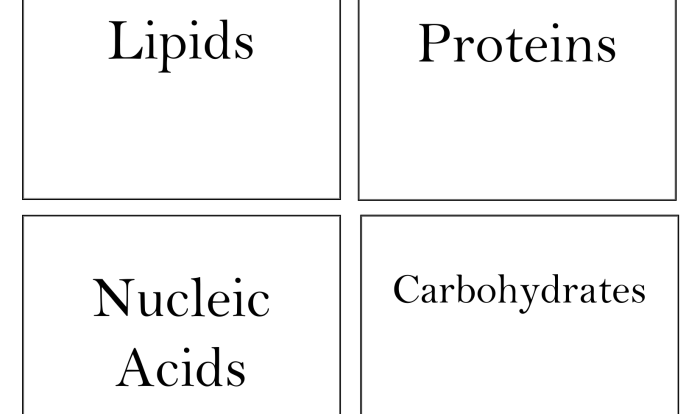Lab p-3 graph analysis answer key – Embark on an enlightening journey into the realm of Lab P-3 graph analysis, where we unravel the mysteries of data visualization and unlock the power of scientific interpretation. Join us as we delve into the depths of this fascinating subject, guided by our comprehensive answer key that will illuminate every step of your analytical adventure.
Our exploration begins with an overview of Lab P-3 graph analysis, deciphering its significance and the diverse types of graphs employed. We will meticulously examine the key features and components that form the backbone of these graphs, laying the foundation for your understanding.
Methods for Analyzing Lab P-3 Graphs: Lab P-3 Graph Analysis Answer Key
Analyzing graphs from Lab P-3 involves a systematic approach to interpret the data presented visually. Here are the key steps involved:
- Identify the variables:Determine the independent and dependent variables represented on the graph’s axes.
- Examine the scales:Check the range and units of both axes to understand the scale of the data.
- Plot the data points:Mark the data points clearly on the graph, ensuring accuracy and consistency.
- Draw the line of best fit:Determine the trend or relationship between the variables by drawing a line that approximates the data points.
- Calculate the slope and y-intercept:Use the line of best fit to determine the slope (rate of change) and y-intercept (initial value) of the linear relationship.
In addition to these steps, several techniques can aid in interpreting data from Lab P-3 graphs:
- Identify patterns and trends:Observe the overall shape and direction of the line of best fit to determine any linear or non-linear relationships.
- Extrapolate and interpolate:Use the line of best fit to estimate values beyond or between the plotted data points.
- Compare multiple graphs:Analyze graphs representing different variables or conditions to identify similarities, differences, and correlations.
It is important to be aware of common pitfalls and errors in Lab P-3 graph analysis:
- Misinterpreting the line of best fit:Avoid assuming that the line of best fit perfectly represents the data points; it only approximates the overall trend.
- Ignoring outliers:Outliers can skew the line of best fit; consider their significance and potential impact on the analysis.
- Overgeneralizing the results:Graphs represent specific data sets and conditions; avoid making broad generalizations beyond the scope of the experiment.
By following these methods and techniques, researchers can effectively analyze Lab P-3 graphs to draw meaningful conclusions and make informed decisions based on the experimental data.
Applications of Lab P-3 Graph Analysis
Lab P-3 graph analysis finds extensive applications across various scientific disciplines. It provides valuable insights into complex data, enabling researchers to uncover patterns, trends, and relationships that may not be apparent from raw data alone.
In physics, Lab P-3 graphs are used to analyze motion, forces, and energy. For instance, by plotting position versus time, scientists can determine the velocity and acceleration of an object. Similarly, in chemistry, Lab P-3 graphs help determine the rate of reactions, equilibrium constants, and activation energies.
Case Studies
- In medicine, Lab P-3 graphs are used to analyze patient data, such as blood pressure, heart rate, and oxygen levels. These graphs help medical professionals diagnose and monitor conditions, track treatment progress, and make informed decisions.
- In environmental science, Lab P-3 graphs are used to study pollution levels, climate change, and ecosystem dynamics. By analyzing data on temperature, rainfall, and air quality, researchers can identify trends, predict future scenarios, and develop strategies for environmental protection.
Limitations and Challenges
While Lab P-3 graph analysis is a powerful tool, it also has limitations. One challenge lies in the accuracy of the data being plotted. Errors in data collection or measurement can lead to inaccurate graphs and misleading conclusions.
Additionally, Lab P-3 graphs can only provide a two-dimensional representation of data. This can be limiting when analyzing complex systems with multiple variables. To overcome these limitations, researchers often use more advanced statistical techniques and multi-dimensional visualizations.
Advanced Techniques for Lab P-3 Graph Analysis
As Lab P-3 graph analysis continues to evolve, advanced statistical methods and software tools are emerging to enhance its capabilities. These techniques enable researchers to extract more meaningful insights from complex data and explore new frontiers in data analysis.
Advanced Statistical Methods
- Multivariate Analysis:Techniques like Principal Component Analysis (PCA) and Linear Discriminant Analysis (LDA) allow researchers to analyze multiple variables simultaneously, identify patterns, and reduce data dimensionality.
- Time Series Analysis:Methods like Autoregressive Integrated Moving Average (ARIMA) models are used to analyze time-dependent data, identify trends, and forecast future values.
- Non-parametric Tests:These tests, such as the Kruskal-Wallis test and the Mann-Whitney U test, are used when data does not follow a normal distribution or when the sample size is small.
Software and Tools for Lab P-3 Graph Analysis, Lab p-3 graph analysis answer key
Numerous software packages and online tools are available to facilitate Lab P-3 graph analysis, including:
- MATLAB:A powerful programming language widely used for data analysis, visualization, and numerical computations.
- R:An open-source statistical software environment known for its extensive statistical functions and data manipulation capabilities.
- GraphPad Prism:A commercial software specifically designed for scientific graphing and statistical analysis.
Emerging Trends and Future Directions
The future of Lab P-3 graph analysis is promising, with emerging trends and developments driving its evolution:
- Artificial Intelligence (AI) and Machine Learning (ML):AI and ML algorithms are being integrated into graph analysis tools to automate data interpretation, identify hidden patterns, and make predictions.
- Big Data Analytics:The increasing availability of large datasets is driving the development of scalable and efficient graph analysis algorithms.
- Interactive Data Visualization:Advanced visualization techniques are being developed to enhance the user experience and facilitate data exploration.
Lab P-3 Graph Analysis Answer Key
Key Concepts, Formulas, and Equations
The following table summarizes the key concepts, formulas, and equations related to Lab P-3 graph analysis:
| Concept | Formula/Equation | Example |
|---|---|---|
| Slope | m = (y2
|
m = (5
|
| Y-intercept | b = y
|
b = 2
|
| Linear equation | y = mx + b | y = 1x
|
| Quadratic equation | y = ax^2 + bx + c | y = 2x^2
|
| Exponential equation | y = a
|
y = 2
|
Detailed FAQs
What is the significance of Lab P-3 graph analysis?
Lab P-3 graph analysis is a powerful tool that enables scientists to visualize and interpret experimental data, uncovering patterns and relationships that may not be apparent from raw numbers alone.
What are the common pitfalls to avoid in Lab P-3 graph analysis?
Common pitfalls include misinterpreting axes labels, overlooking outliers, and drawing unwarranted conclusions based on limited data points. Careful attention to detail and a critical eye are essential for accurate analysis.
How can I enhance my understanding of Lab P-3 graph analysis?
Practice is key! Engage in hands-on analysis of various graphs, seeking guidance from experienced mentors or online resources. Additionally, familiarizing yourself with statistical concepts and software tools can further deepen your comprehension.

